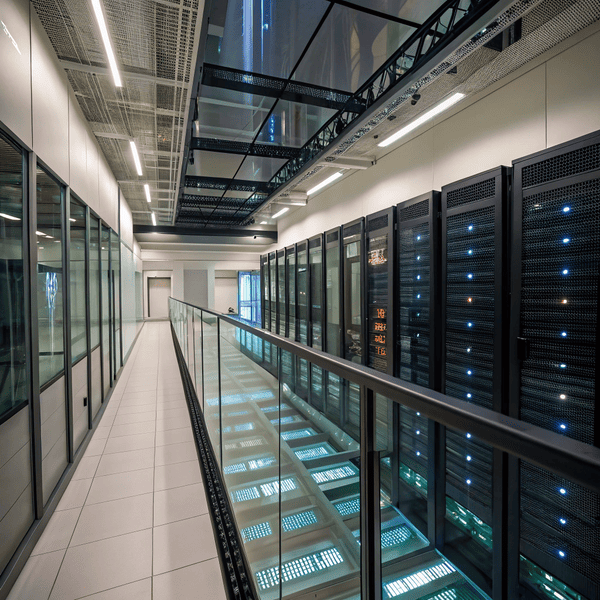When people picture high-tech data centers, they often imagine tall towers full of servers. The reality is most are just one When people picture high-tech data centers[^1], they often imagine tall towers full of servers. The reality is most are just one sprawling floor, and there are clear reasons for this.
[^1]: Explore this link to understand the advanced technologies and designs that define high-tech data centers.
, and there are clear reasons for this.
Most data centers are built on a single ground floor because it reduces risk and simplifies cooling, power delivery, and access for heavy equipment. This helps ensure consistent uptime for critical systems.
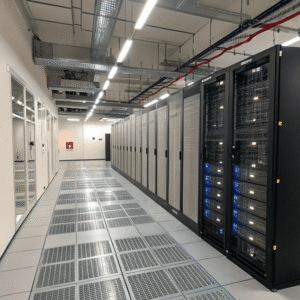
I once visited a facility expecting rows of stacked racks winding up multiple stories. Instead, it was a huge single-level space that reminded me of a warehouse, not a skyscraper. Let’s break down why this is the case and what factors keep data centers low to the ground.
Do data centers have multiple floors?
Many might assume larger centers stack equipment like an office building, but that's rarely true.
Most data centers use a single floor for operations. Some larger sites use multiple floors, but this is uncommon due to increased risks, infrastructure challenges, and higher costs.
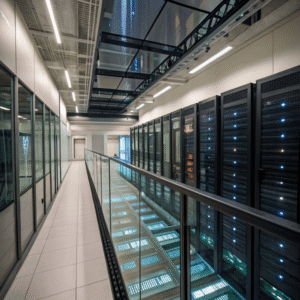
The core functions of data centers—cooling, cable management, and The core functions of data centers—cooling[^1], cable management, and power distribution—work best on one level. Here are the main points to consider:
[^1]: Understanding cooling best practices can enhance efficiency and reduce costs in data centers.
—work best on one level. Here are the main points to consider:
| Factor | Single Floor | Multi-Floor |
|---|---|---|
| Cooling | Simpler, more even | Complex, airflow issues |
| Equipment Access | Direct, easy | More elevators, harder moves |
| Structural Risk | Lower, stable loads | Higher, more vibration |
| Cable Laying | Shorter, simple | Long runs, vertical risers |
| Cost | Lower | Higher |
When I toured a multi-story data hub, workers explained that added costs and risks made it the exception, not the rule. Most operators prefer the predictability of a single ground floor, especially when uptime is everything.
What is the best flooring for a data center?
The right floor can make or break a data center’s ability to stay cool, clean, and safe from static or wiring mess.
Raised access flooring, typically made of antistatic panels, is the global standard for data centers. It allows cables and cooling systems to run beneath equipment safely and efficiently.
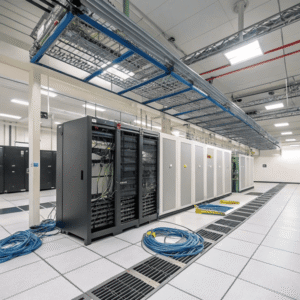
Raised floors help distribute cool air[^1] right to the bottom of server racks while hiding massive cable bundles. Here’s what makes this system essential:
[^1]: Learn about the mechanics of air distribution in server rooms and why it's crucial for equipment performance.
help distribute cool air right to the bottom of server racks while hiding massive cable bundles. Here’s what makes this system essential:
| Feature | Raised Access Floor | Concrete/Regular Floor |
|---|---|---|
| Cable management | Easy, hidden | Difficult, exposed |
| Cooling distribution | Direct, efficient | Uneven, inconsistent |
| Static protection | Antistatic panels | Needs extra treatment |
| Flexibility | High (easy changes) | Low (hard to rewire) |
I remember seeing technicians run just about any cable or add cooling pipes with little disruption, all thanks to the modular tiles of a raised floor. If someone needed to reroute something, they just popped a tile—and got right to work.
Why can't data centers be built underground?
Digging deep can seem smart for safety or land costs, but underground data centers are almost unheard of in the industry.
Building data centers underground is rare because of massive cooling challenges, flood risks, higher construction costs, and limited emergency access. It’s safer and cheaper to keep facilities at ground level.
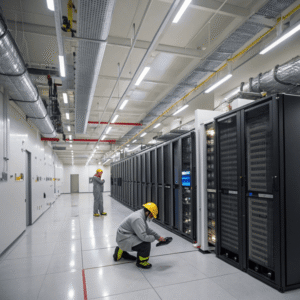
Underground construction can appeal for security or land-saving reasons, but server rooms[^1] generate enormous heat that’s hard to discharge below ground. Plus, water tables, leaks, and energy upgrades all add risk and expense. Here’s a side-by-side
[^1]: Learn about effective heat management strategies in server rooms to ensure optimal performance and reliability.
can appeal for security or land-saving reasons, but server rooms generate enormous heat that’s hard to discharge below ground. Plus, water tables, leaks, and energy upgrades all add risk and expense. Here’s a side-by-side comparison:
| Constraint | Ground-Level Center | Underground Center |
|---|---|---|
| Cooling Efficiency | High, easy ventilation | Low, hard to vent |
| Flood Risk | Manageable | High, prone to leaks |
| Construction Cost | Normal | Much higher |
| Safety/Egress | Direct, quick exits | Harder in emergencies |
| Upgrades & Expansion | Simple | Very expensive |
A friend once helped with a data center project that considered going partly underground for stealth. In the end, cooling retrofits and water sealing nearly doubled projected costs, so they went back to a normal slab. It’s not just tradition—ground level means fewer expensive surprises.
Conclusion
Data centers rely on single ground floors because it keeps things simple: better cooling, lower risk, and smoother daily operations—so uptime and performance always come first.

